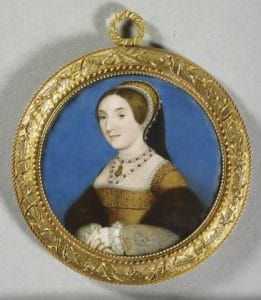 Thank you to my dear friend Teri Fitzgerald for writing this guest article on Katherine Howard and her portraiture. Here is an excerpt and you can read the rest if you open or download it as a report using the links at the bottom. Over to Teri…
Thank you to my dear friend Teri Fitzgerald for writing this guest article on Katherine Howard and her portraiture. Here is an excerpt and you can read the rest if you open or download it as a report using the links at the bottom. Over to Teri…
In his meticulously researched and thoughtful biography of Katherine Howard, Young & Damned & Fair (2017), Gareth Russell brings to life Henry VIII’s young queen: she is attractive, likeable and at the same time startlingly reckless.
In July 1540 when Katherine Howard, niece of the Duke of Norfolk, gave her hand in marriage to Henry VIII, she was already pledged to another man. It would come as a devastating blow to the king, by now well past his prime, to discover that his lovely young bride was not the jewel of womanhood he believed her to be and that his marriage was invalid.
In late 1541 an investigation established that the Queen had been involved with three men both before and after the royal marriage: first with her music master, Henry Mannock followed by Francis Dereham in the household of the dowager Duchess of Norfolk, then Thomas Culpeper, a gentleman of the privy chamber, replaced Francis Dereham in the Queen’s affections.1
[Dereham] “kept the lady from the time he violated her at the age of 13 until 18.”
From his despatch to Francis I in December 1541, it appears that although the French ambassador, Charles de Marillac, had been informed of the queen’s age, the time frame of her alleged misconduct, as well as the involvement of Dereham and Culpeper, he was apparently oblivious to the ‘furtive fondling’ of Henry Mannock when Katherine was, in her own words, ‘but a young girl’.2
Click here to carry on reading and to download Teri’s report as a PDF.
Click here to see the List of Figures which gives more detail on the portraits and images.